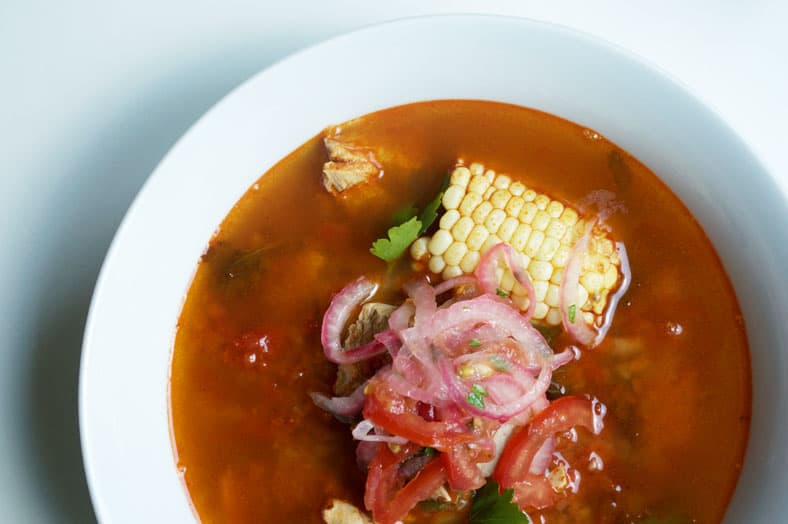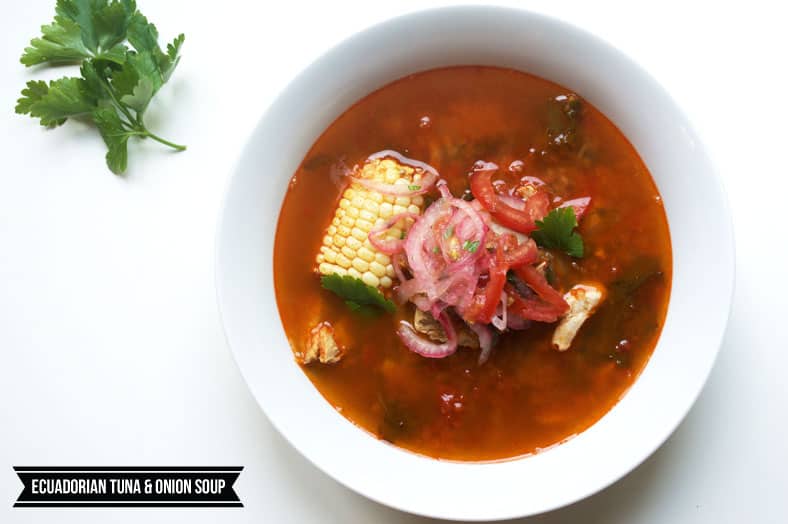Every once in a while, you come across a dish that is really special.
It’s hard to explain the what and particularly hard to explain the why, but certain dishes seem to symbolize something more than just the sum of their ingredients. There’s true symbolism nestled into each and every bite.
As integral as anything else to Ecuador – and certainly to Guayaquil – encebollado is one such dish.

Encebollado, Guayaquil, The Spanish and Hangovers
Few recipes truly stand the test of time, let alone survive drastic political and cultural shifts in its hometown. Loads of recipes have either fallen by the wayside or been unrecognizably altered from its original form.
In this case, encebollado is an amazingly rare exception. From indigenous tribes to the Incans to the Spanish to modern times, the dish has admirably withstood the test of time.
Let’s take it from the beginning.
Ecuador’s Prehistory and the Valdivia
Archaeological evidence suggests that Ecuador was inhabited as early as 11,000 years ago. Upon arrival, different settlements popped up and dispersed across the various terrains of the country. While most early settlements seemed to have been in the Andes and the sierras, there were still a few outlying settlements along Ecuador’s vast coastline as well.
Along the coastline, there was one particular settlement that had a profoundly positive impact on the rest and for the coastal region as a whole. First arriving somewhere between 6,000 and 4,500 BC, the Valdivia were among the first costeños to cultivate the lands and to develop agriculture for their subsistence. They also created intricate and advanced types of pottery for the time, and there’s even clues to suggest that the Valdivia had engaged in trans-Pacific trade with Japanese cultures.
It’s here that we see the first inklings of encebollado. As master fishermen, the Valdivia would catch and boil fish from the rivers – especially albacore – and consume them in pots filled with their own broth.
Of course, this just the tip of the iceberg for the recipe.
The Spanish Influence
By now, you can probably discern a recurring theme with most South American countries: the Spanish – good, bad or indifferent – played an instrumental role in its history.
Before the arrival of the Spaniards, however, Ecuador had recently been taken over by another major power: the Incans. As we touched upon in our discussion about Peru and anticuchos, the Incans were a regional force that had aspirations of becoming more powerful. The Incans launched an expansionary campaign in all directions of its existing kingdom, and Ecuador was in its directly northward line. Despite the clear strength advantage the Incans held over the various fragmented indigenous communities, it took nearly 37 years for them to fully conquer and annex the territory into the Empire.
The Incans ultimately held onto Ecuador for less time than they had spent fighting for it. By the early 1530s, the Incan Empire was embroiled in a fierce civil war, and the Spanish, led by explorer Francisco Pizarro, first touched ground in Ecuador. Pizarro was quick to learn of the crumbling Incan influence, and he would launch an attack in 1532 and quickly crushed the Incans to take control of the country.
In the years following the conquest, the Spanish very quickly began establishing new cities and outposts in their new colony. Most notably, the city of Guayaquil was established in the same place where the Valdivia had settled many centuries before.
When the Spanish arrived, encebollado was still being commonly consumed by the indigenous peoples, and it was one that the Spanish themselves took a liking to as well. Encebollado became a very common dish the Spanish would serve to their armed forces and shipmen returning from sea and back to the little city nestled on the Guayas river.
Instead of simply copying the recipe, however, the Spanish imported and added their own preferred ingredients into the soup as well. Particularly from the 18th century onward, ingredients like onions, yuca, lemon and others of Spanish or North African origin quickly made their way into the soup.
The Encebollado of Today
Nowadays, there’s a small urban myth surrounding encebollado. Especially in the cities of Guayaquil and Quito, it’s thought that a bowl of encebollado will help you alleviate any lingering effects of any alcohol-induced issues from the night before. That’s right… encebollado is apparently a great hangover food.
There’s a couple of reasons for why people speculate this is. The first theory involving the dock workers in Guayaquil suggests that these men would capitalize on their free time by consuming copious amounts of alcohol. To handle their borrechera (drunkenness) and the impending chuchaqui (hangover), they would find a local purveyor of encebollado to help them cope.
Another (not mutually exclusive) theory suggests that the timing of catching fish has something to do with it. Prior to the days of refrigerators – they wouldn’t arrive in Guayaquil until at least the 1940s – the fish that was caught in the wee hours of the morning needed to be tended to and cooked before they would spoil. Encebollado was a great, easy way to make use of the fish, which led to it becoming a de facto dish both for an early morning breakfast… and a very late evening snack.
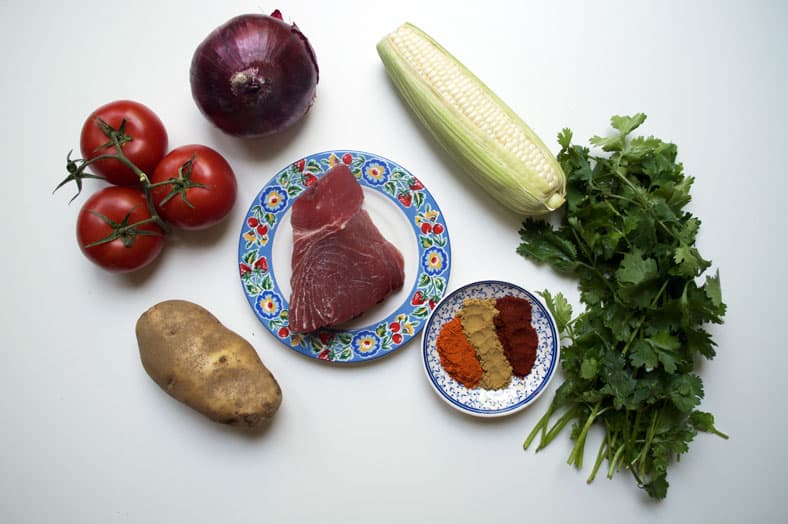
About the Recipe
According to a chronologist of the dish, the term encebollado refers to any type of meat served with cooked, “hardened” onions.
In this particular case, whereas some of the other ingredients will come and go from the dish, your onions will be used from start to finish.
First, you’ll want to create your broth in which your albacore or tuna will boil. Start with cooking onions, tomatoes and some spices in a stockpot, and you’ll follow with enough water to create a broth that will submerge your piece(s) of tuna.
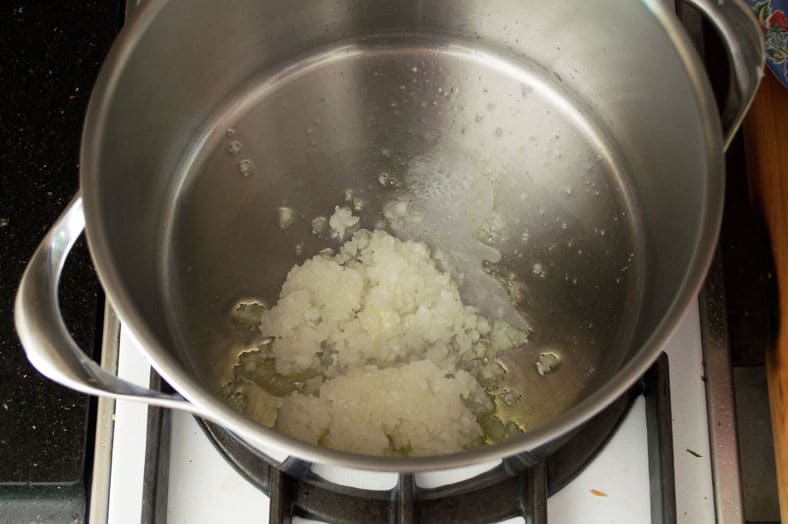
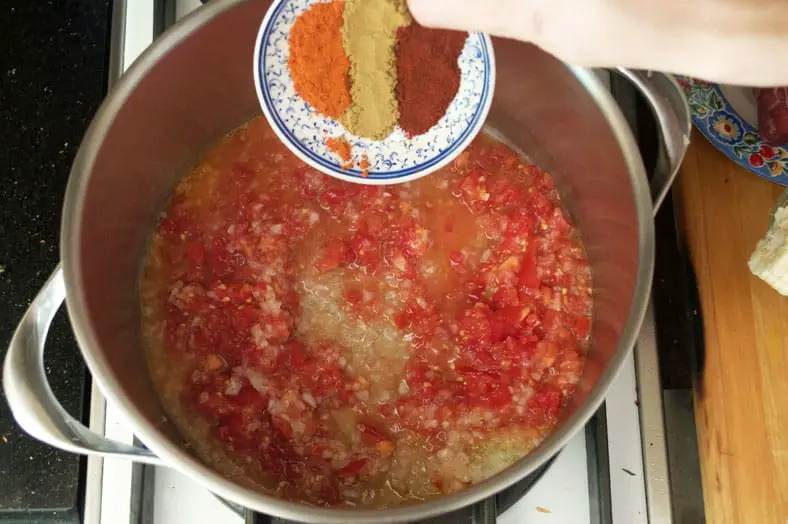

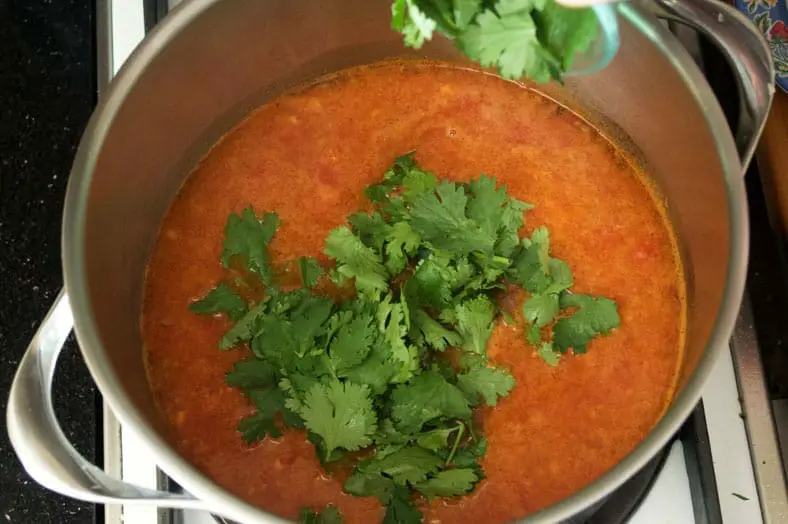
Next comes the fish. Much like it was originally done with the Valdivia peoples, you’ll submerge your fish into the broth and let it boil. You’ll only want to do this for 10 minutes or so, until your tuna is fully cooked through. Remove the tuna from the pot and set aside for the time being.

Next, you’ll add in your starchier vegetables. Depending on what you use, this could range from yuca to cassava to potato to corn and more. Add them into the broth – which is now has developed into a fragrant fish stock thanks to the tuna – and boil until cooked through.
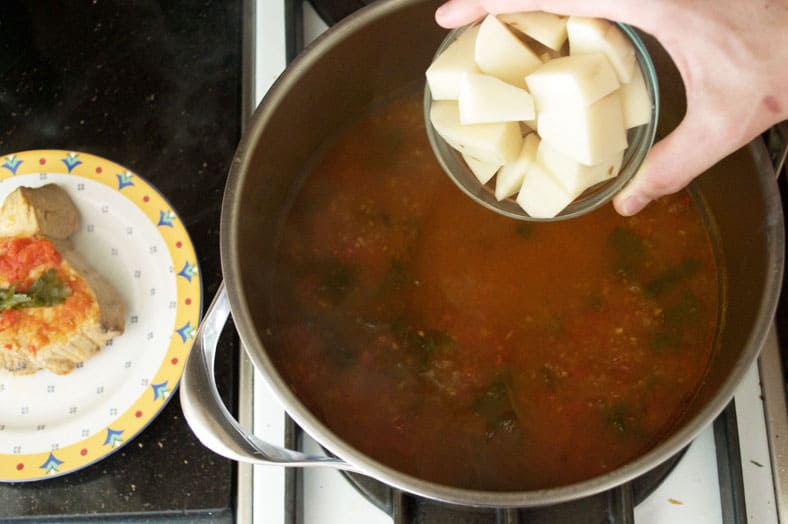
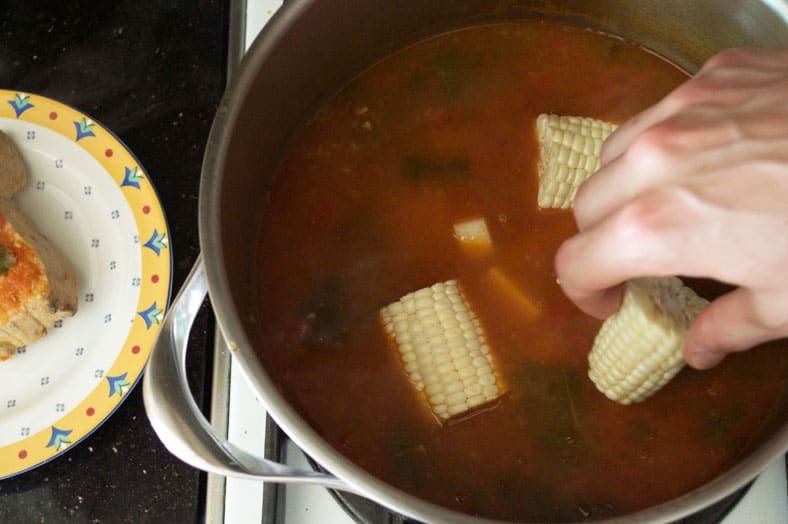
At this point, there’s a special relish made of sliced red onion, tomatoes and lemon juice that goes fantastically with the encebollado. All it needs is 10 minutes to marinate together, and it’s good to go. The perfect time to create a batch from scratch would be right after you add in your starchy vegetables into the broth.

Finally, you’ll want to flake your tuna and return it to your encebollado. Stir it around a bit, and then take it off the heat. Pour yourself a bowl and drizzle some topping, and dig in!
Our Take on the Recipe
As with any “prideful” dish, you’ll find an assortment of variations in the recipe. While we were tempted by a few, we found this particular recipe most enticing (especially because of the topping), which is why we made it our reference recipe.
Unlike some other recipes on Arousing Appetites, this was one that we ended up making very few adjustments to. The ones we did make, however, were slightly more nit-picky than anything else.
For starters, we swapped out olive oil for the sunflower oil mainly due to our aversion of vegetable oils (where we can help it). We swapped out the yuca in favor of potato, which was something we’d drawn upon from other recipes. Yuca is more authentic to the dish by far, but we preferred the potato. And finally, we added a dash of paprika into the mix to give some added color and zing to the dish.
Not that the soup needed it, though. Encebollado is a delectable, wholesome and easy dish to make, and it’s one that has become a mainstay in our kitchen.
Enjoy!
How would you prepare your encebollado? Comment below!
